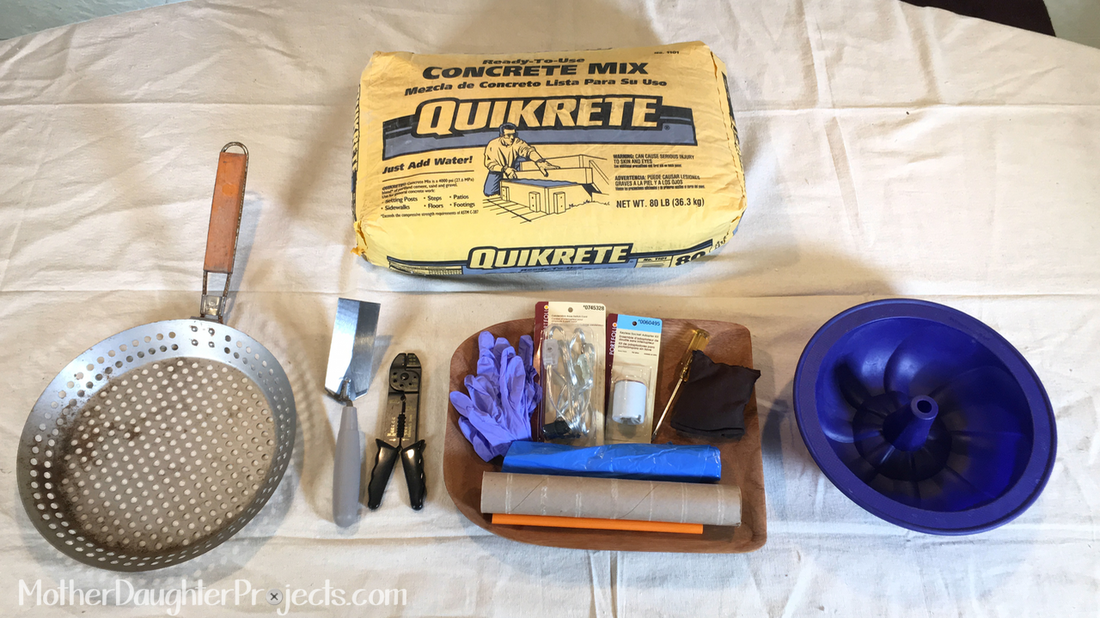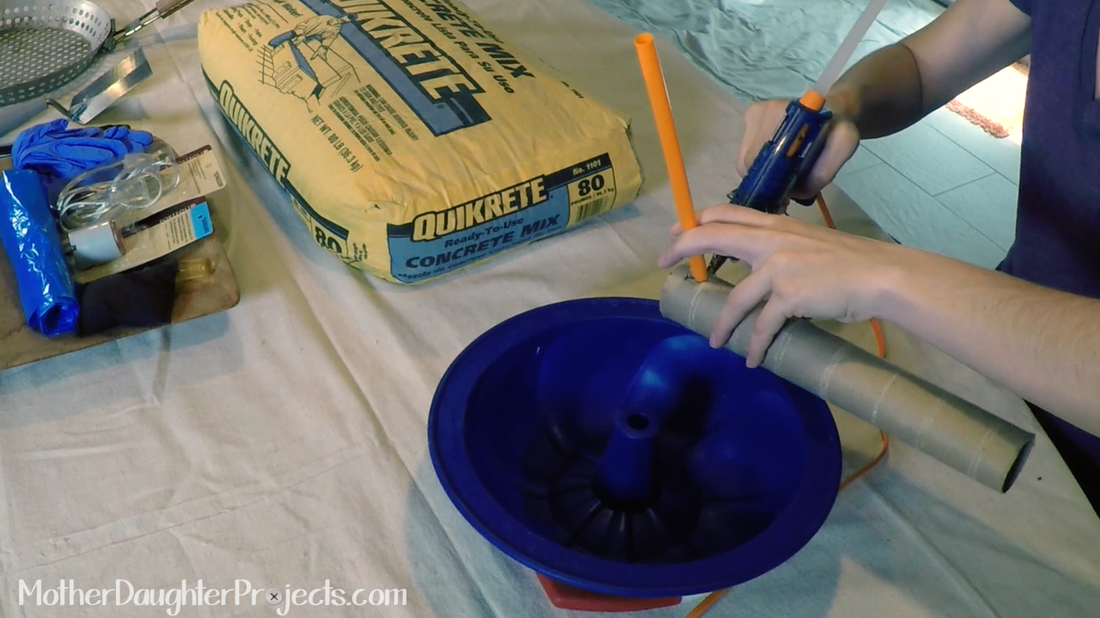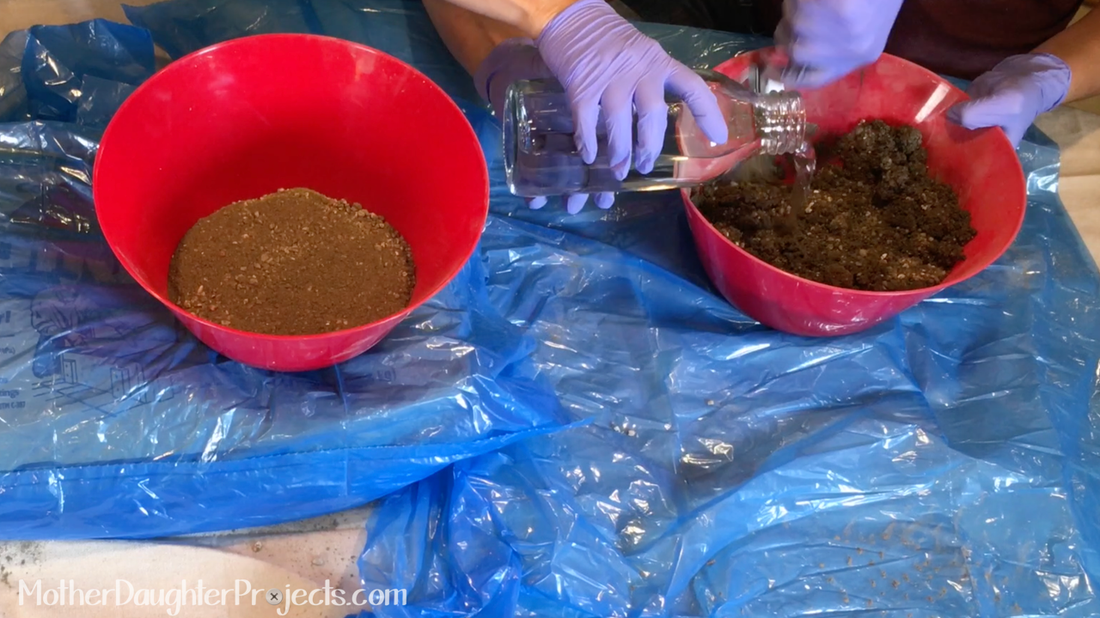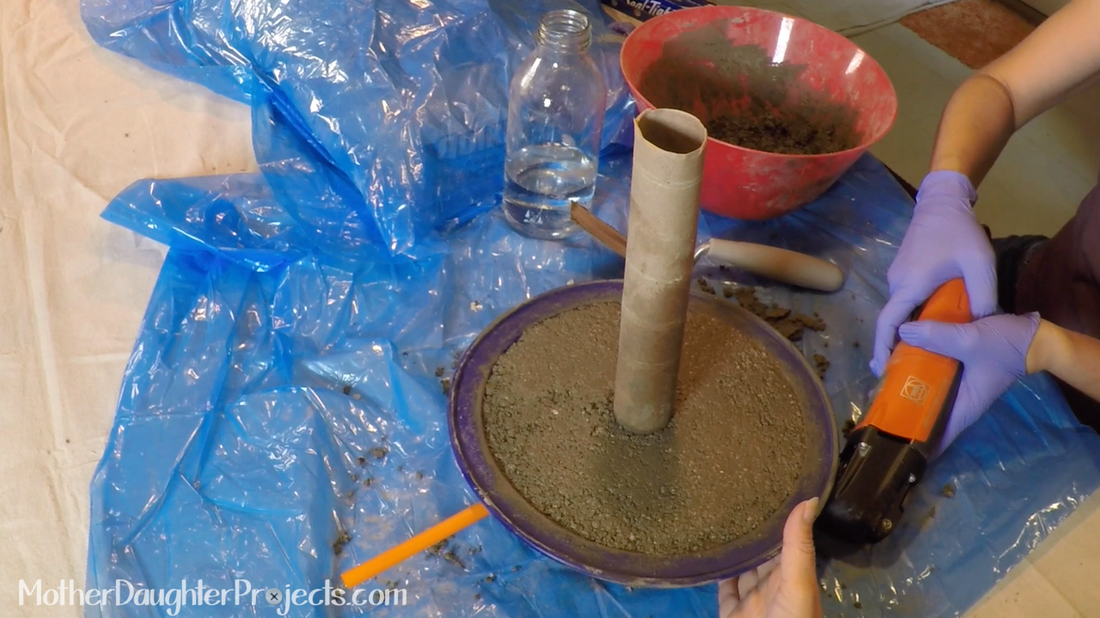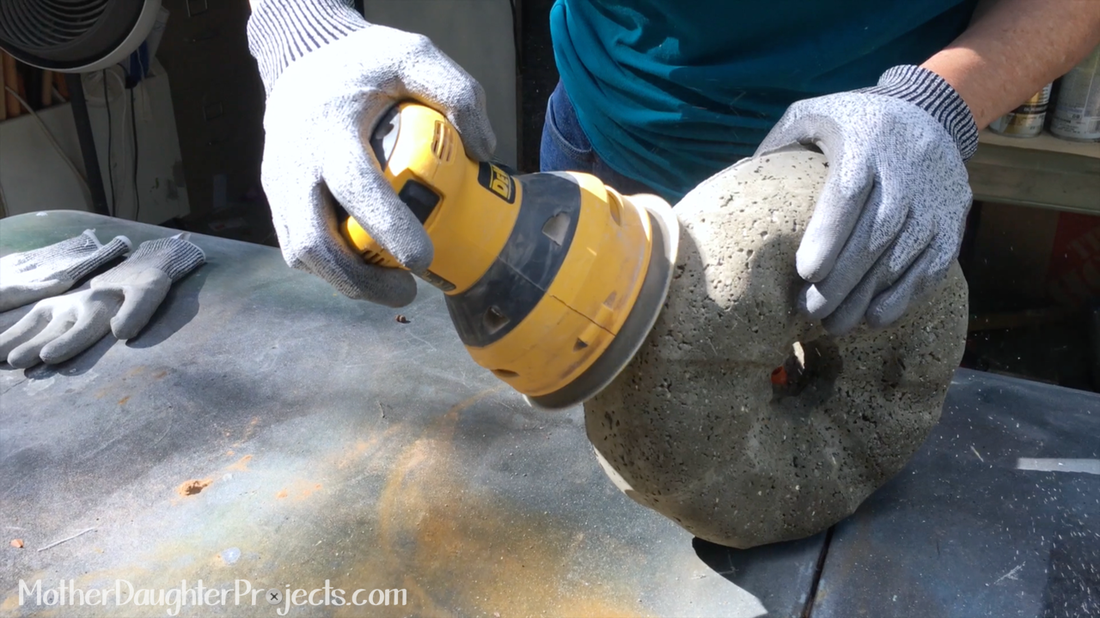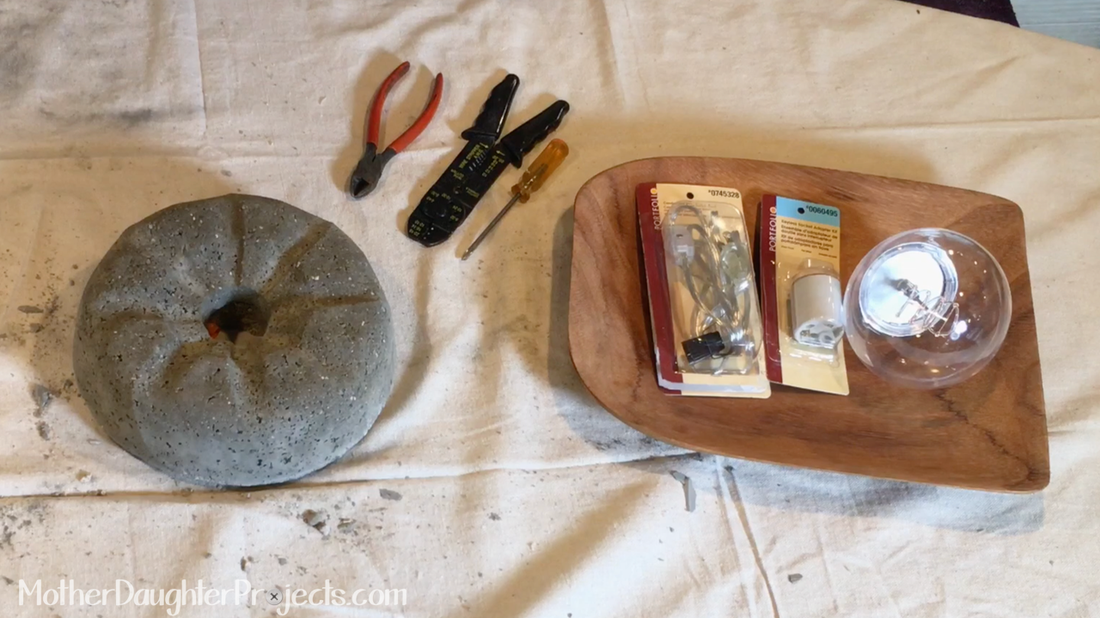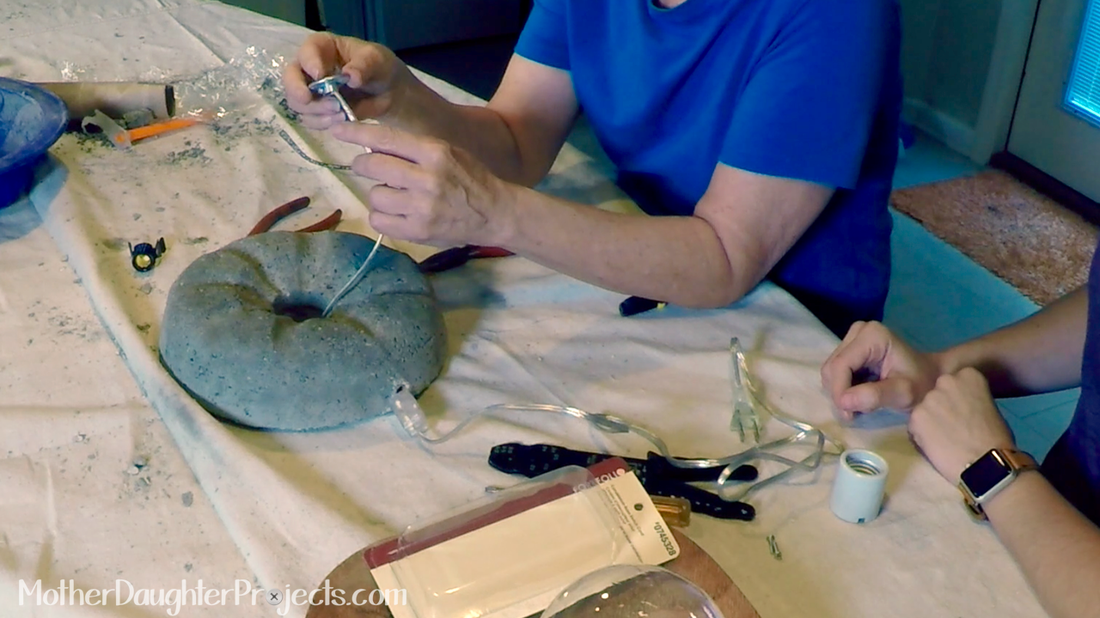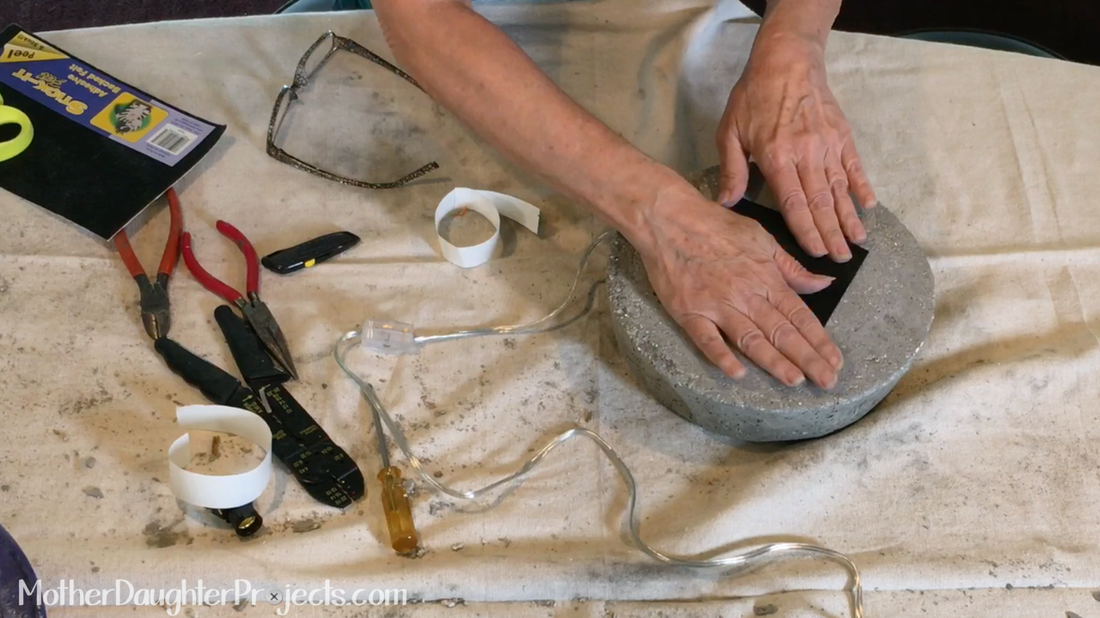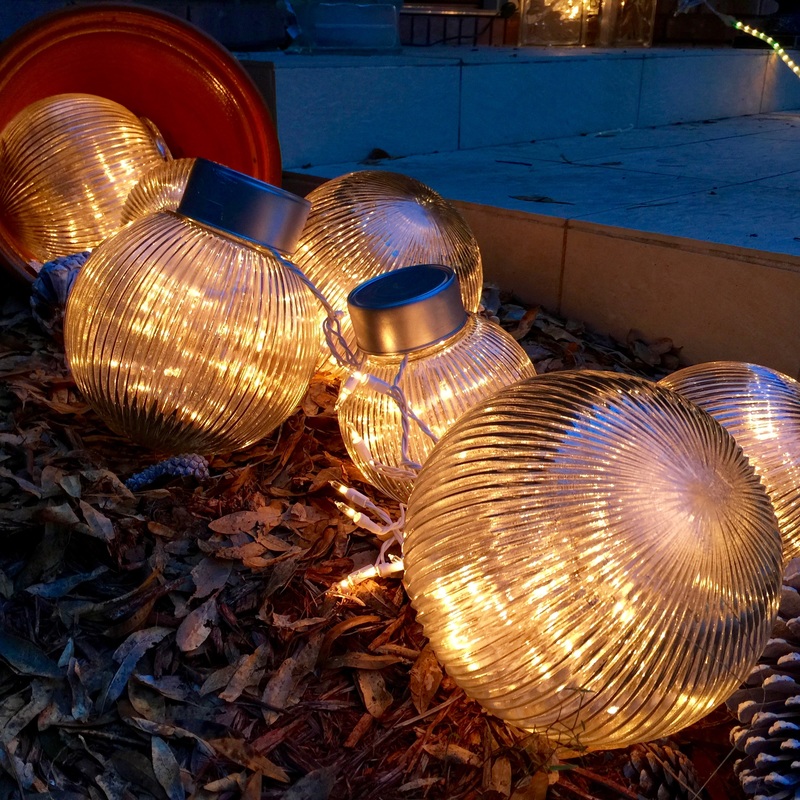One of the classes Steph took at the Haven DIY Conference was learning how to cast with concrete. The class, sponsored by Quikrete, was taught by blogger, Ben of Home-Made Modern, the guru of all things concrete! Steph made this fun concrete hand in the class (see below).
Once home, we decided to put into practice what she had learned. Steph also took a concrete class on the DIY website Instructables.com.
We decided to make a light bulb lamp utilizing an Edison bulb we got at Ikea and a silicone bundt pan I found at a yard sale for .25!
Prepare the silicone mold. Place the cardboard tube over the center. Cut a hole near the edge of the mold and slide the straw through to the middle. Cut a hole in the cardboard tube.
Hot glue into place if needed. We hot glued the straw into place on the outside of the mold as the mold started to tear. (The straw is gong to serve as a tunnel in which the cord will be run through the concrete.)
Wearing gloves and face mask, use the sifter to sift out the rocks. Place the amount of concrete you want to use in a clean plastic bowl—we used about six cups at a time.
Add just enough water to make a stiff batter like consistency—kind of like brownies. Don’t add too much water. Use the trowel to mix.
Spray the inside of the bundt pan with cooking spray. This will help the mold slip right off when the concrete is cured.
Using the sander without sandpaper or multi-tool, place it on the edge of the mold to help move air bubbles to the surface.
Cover the bowl with plastic wrap and leave undisturbed for 20 hours.
At the end of 20 hours, remove the cardboard tube, and the concrete from the mold.
Use 60 grit sandpaper to remove any rough edges. Clean up the straw ends so the outside part is flush with the side of the concrete.
Wire the lamp socket.
Thread the cord through the straw from the outside. Remove the bottom from the socket and thread this onto the cord.
Identify the hot and neutral wires and wire the socket—the ribbed half of the wire is the neutral. This connects to the silver screw in the socket and the smooth half of the cord is the hot wire and connects to the brass wire. Do some research if you’re new to wiring a socket. It’s not hard but you need to be sure to connect the wires correctly.
Replace the bottom of the socket—put the socket into the center of the concrete base.
We found the socket would not stand up straight in the center so we added some stick-on felt to the bottom of the socket to add some thickness—this worked well—we also added a piece of felt to the bottom to keep it from scratching the surface it's placed on. You could also use electrical tape to add thickness to the outside of the socket.
Screw in the bulb and you are done! This is a perfect lamp for Steph's nightstand. The weight makes sure she will not accidentally knock over the light in the dark.
For more on what we learned watch our how-to video at the top of the post!
Please note: We are not sponsored by any of the companies/products that we used. These products were picked and bought by us.
FYI: We are not professionals, and we don’t claim to be. This is what we found worked for our project. Yours may need a little different approach. Safety first! FYI: Affiliate links are being used on this page. Purchasing via these links help support MDP! Related Projects
5 Comments
Steph
8/30/2016 11:21:10 am
Thanks Katie!
Reply
12/15/2016 06:57:03 am
What a great idea!
Reply
Steph
12/15/2016 11:08:52 am
Thanks! haha...we have been asked that about the tree a few times. We got it at a yard sale so not sure where they got it from :(
Reply
4/5/2017 01:46:00 am
I just found this blog and have high hopes for it to continue. Keep up the great work, its hard to find good ones. I have added to my favorites. Thank You.
Reply
Leave a Reply. |



